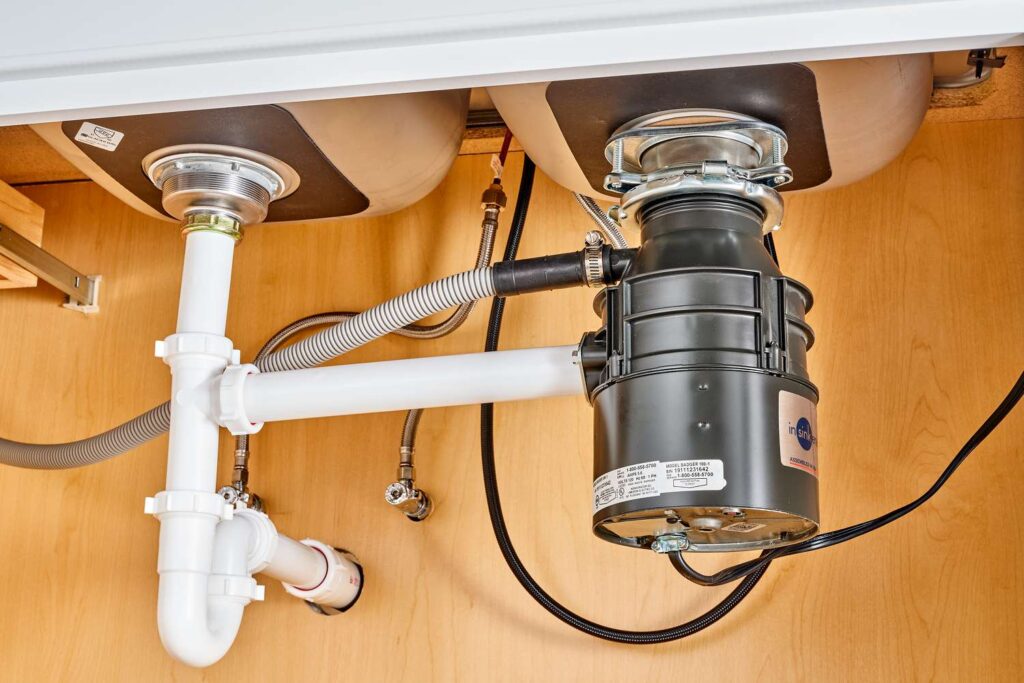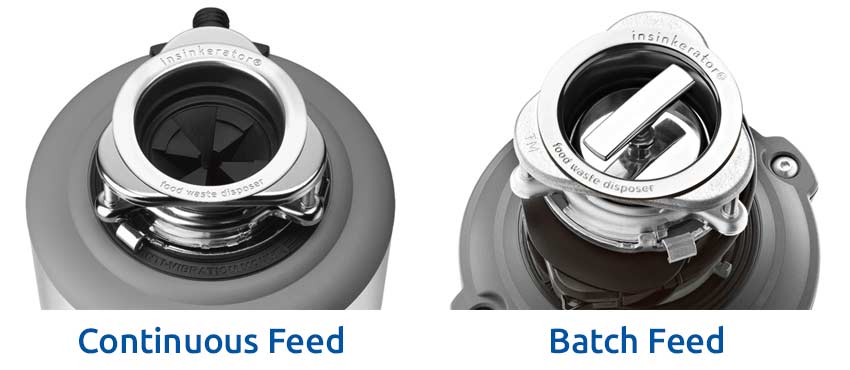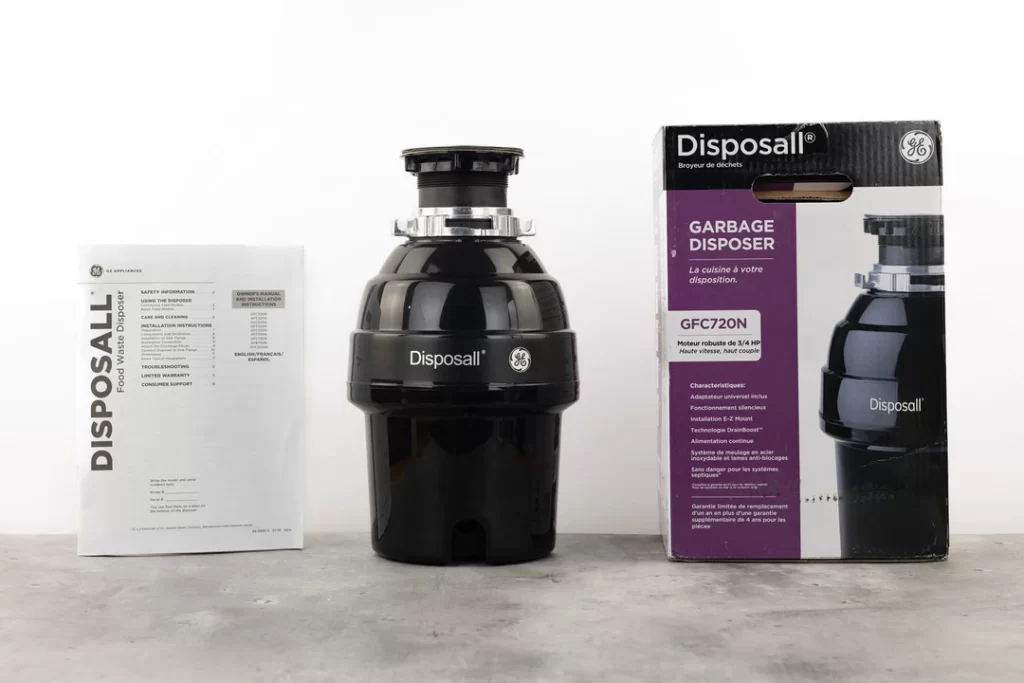
Introduction
Welcome to our guide to continuous feed garbage disposals! In this article, we’ll take a look at what a continuous feed garbage disposal is, what the two types of garbage disposals are, how they work, and the advantages and disadvantages of using a continuous feed garbage disposal.
Are you looking for a new garbage disposal for your kitchen? Garbage disposals are an essential appliance for anyone who wants to make their kitchen a little bit cleaner. But when it comes to choosing the right garbage disposal, it can be confusing to decide which type is best. Should you get a continuous feed garbage disposal or batch feed garbage disposal?
It’s important to consider the pros and cons of each type, as well as the features and cost. Garbage disposals are broadly classified into two different categories: batch and continuous feed garbage disposals. In this article, we will help you to discover everything about two garbage disposal methods. So what is continuous feed garbage disposal
What are the Two Types of Garbage Disposals? Batch Feed vs Continuous Feed Garbage Disposal

There are two main types of garbage disposals: continuous feed unit and batch feed. The continuous feed garbage disposal is the most popular and widely used, as it is powerful and effective at getting rid of your food scraps.
Continuous feed garbage disposals come with a switch that you can easily control with one hand. When you turn the switch on, the disposal unit will grind up the food waste as it falls into the disposal. Batch feed garbage disposals, on the other hand, require you to insert a stopper before the disposer will begin working. This helps to keep the disposer from clogging up, but it also takes more time and effort to use.
So what exactly is a continuous feed garbage disposal? And what’s the difference between this type of disposal and its counterpart, batch feed disposal?
When it comes to comparing continuous feed vs batch feed garbage disposals, there are a few key differences. We can say that the main difference between the two types is that continuous feed garbage disposals are always running, whereas batch feed disposals are only turned on and off when the stopper is in place.
For starters, the continuous feed garbage disposer is more powerful than the batch feed model. This is because it can grind up larger pieces of food waste, making it ideal for homes that produce a lot of food waste. Additionally, continuous feed disposals are typically quieter than batch feed disposers, making them the preferred choice for people who don’t want to be constantly disturbed by a loud garbage disposer.
This type of garbage disposal is more convenient and often has a larger grinding chamber than continuous feed disposal, which means it can handle more food waste at once. Continuous feed disposals, on the other hand, allow you to feed food waste into the disposer continuously while it is running. This type of garbage disposal is more efficient, but is more expensive and requires more maintenance.
What is a Continuous Feed Garbage Disposal? Different Types Of Garbage Disposals

Have you ever wondered what continuous feed garbage disposal is and how it works? A continuous feed garbage disposal is a type of garbage disposer that is always running, allowing you to keep on throwing food waste into it while it’s running. Whether you should get continuous or batch feed garbage disposal is decided by the requirements of your home.
This type of disposal unit is typically used in homes or restaurants and it is powered by electricity. This type of disposer is usually very simple to install and it is very reliable.
Continuous feed garbage disposal is a type of disposer that is operated by a switch or button. With this type of garbage disposal, you can continuously run water and feed food waste into the disposer, which will grind and dispose of it. This type of garbage disposal is the most commonly used and is the most efficient.
It grinds food waste and other materials as they enter the disposal unit. This is in contrast to batch feed garbage disposal, which requires you to insert food waste into a stopper before the disposer will begin working.
Continuous feed garbage disposals are the most common type
Continuous feed disposals are more popular than batch feed disposals because they provide convenience and ease of use. Unlike batch feed disposals, continuous feed disposers are always running and can quickly dispose of large amounts of food waste. The main difference between continuous feed vs batch feed garbage disposal comes in the functionality. Continuous garbage disposal gains more popularity due to simple operation and maintenance.
A continuous feed garbage disposal is a unit that grinds and disposes of food scraps as soon as it is turned on. This type of garbage disposal is far more efficient than the batch feed type, as it allows for the continuous grinding of food scraps. This type of garbage disposal is also much more powerful, as the motor runs continuously and doesn’t have to be restarted to grind more food. You can easily toss various items into a continuous feed type disposal while doing your usual chores. This multi-tasking saves a lot of time and effort than you would while using a batch feed type disposal unit.
Continuous feed models are more powerful and can handle larger amounts of food waste. Though they are usually more expensive, they are far less likely to clog than batch feed units.
How do Continuous Feed Garbage Disposals Works?
When choosing a garbage disposal, the most important factor to consider is the size of your kitchen. If you have a small kitchen, then a batch feed disposal may be the best option. The size of the batch feed unit will determine how much food waste it can handle at one time. If you have a larger kitchen, then continuous feed disposal may be more suitable.
Continuous feed garbage disposals are designed to grind up food waste as it falls into the disposal. The unit is powered by an electric motor and uses blades to grind up the food waste. The waste is then flushed away through a plumbing line.
Advantages & Disadvantages of Continuous Feed Disposals. What Are The Pros and Cons Of These Two Garbage Disposal?

Continuous feed garbage disposals have many advantages over batch feed disposals. They are more convenient to use, require less effort, and can handle larger amounts of waste. The primary disadvantage of continuous feed disposals is that they can be dangerous if used improperly. To help prevent accidental injuries, most continuous feed disposals come with a splash guard.
It’s important to know the differences between continuous feed and batch feed garbage disposals so that you can choose the right one for your home. Batch feed disposals are generally less expensive, but they require more effort to use and can’t handle large amounts of food waste. Continuous feed disposals are more convenient and can handle larger amounts of food waste, but they can be more dangerous if used improperly.
Continuous feed models are more powerful and can handle larger amounts of food waste. Though they are usually more expensive, they are far less likely to clog than batch feed units.
How Do You Know What Kind Of Garbage Disposal You Need?
When it comes to choosing the right garbage disposal, it can be difficult to know which type is best for your needs. There are two main types of garbage disposals: corded and uncorded, and understanding the differences between them can help you make the right choice.
The best way to determine what kind of garbage disposal you need is to consider the size of your home and the amount of waste you generate. If you have a large home and generate a lot of food waste, a continuous feed disposer may be the best option for you. If you have a smaller home and generate less waste, a batch feed disposer may be more suitable.
Differences between batch feed and continuous feed garbage disposals. What’s the difference between corded and Uncorded garbage disposal?

Corded and uncorded garbage disposals refer to two different types of garbage disposals. Corded and uncorded garbage disposals differ in the way they are powered. Corded garbage disposals are the traditional type of garbage disposal that requires the user to plug it into an electrical socket. Uncorded garbage disposals, on the other hand, don’t require an electrical socket and instead use a battery to power the unit. The primary difference between the two types is the power source. The size of batch feed garbage disposers is usually larger when compared to continuous feed disposers. Continuous type of disposal machines is cheaper and more affordable compared to batch feed garbage disposal.
Batch feed garbage disposals, or continuous feed garbage disposers, are the two types of garbage disposals most commonly used today. Batch feed garbage disposals come with a cover that must be locked in place before the unit will work. Continuous feed garbage disposal does not require a cover and is activated by a switch on the side of the unit. The primary difference between the two is the size of the batch feed garbage disposal, as it is much smaller than the continuous feed-type garbage disposal.
How do I turn on batch feed garbage disposal?
When compared to continuous feed garbage disposals, batch feed garbage disposals work by manually turning on the unit with the push of a button. This is typically a switch located at the bottom of the disposal unit. Batch feed disposals are also often equipped with a stopper to prevent any items from falling into the disposal, making them safer to use.
Turning on a batch feed garbage disposal is easy. First, make sure the stopper is securely inserted into the drain. Next, flip the switch to the “on” position. The disposal will then begin grinding food waste. To turn it off, simply remove the stopper.
Batch feed garbage disposals require you to load food waste into the disposer one batch at a time, then turn on the disposal. To turn on the batch feed disposal, you simply insert the stopper into the disposer, push the switch or button, and the disposal will start grinding.
Are garbage disposals automatic?
When using a batch feed garbage disposal, it is important to remember that they do not work automatically. You must manually lock the cover in place and then turn the unit on. Most batch feed garbage disposals come with an instruction manual that will explain how to do this.
Continuous feed garbage disposals, on the other hand, are usually automatic and do not require any manual action. To start the garbage disposal, you simply need to turn it on. Continuous feed garbage disposals have many advantages over batch feed garbage disposals, including the fact that they are more powerful and can grind up tougher items, like bones.
It is important to note that there are other types of garbage disposals, such as electric and manual. Electric garbage disposals are powered by electricity and can grind up tougher items, but they are typically more expensive and require more space to install. Manual garbage disposals are operated manually and are usually much less powerful than electric feed models.
Whether you choose a corded or uncorded garbage disposal, batch feed or continuous feed, or electric or manual, understanding the differences between the various types of disposals is the key to making the right choice. With that in mind, you can be sure that you are getting the right garbage disposal for your needs.
Most modern garbage disposals are automatic, meaning they will start grinding up the food waste as soon as you turn on the sink. However, some models may require you to press a button or pull a lever to start the grinding process.
Tips

There are a few things you can do to get the most out of your garbage disposal, no matter if you install a batch or continuous feed.
- Consider the size of your sink and the size of the garbage disposal unit you’re looking at. If your sink is larger than the disposal, you may need a larger unit.
- Compare the different types of disposals to determine which one will work best for you. Continuous feed units are more powerful and can handle more waste than batch feed units.
- Consider the cost when making your decision. Batch feed units tend to be the most affordable, but continuous feed disposals can handle more waste.
- We recommend running the water while this disposal is running since it helps flush the food down to the septic or sewer system.
- When using a batch feed disposal, make sure that you use the appropriate size stopper for the size of your disposal. A too-small stopper can cause the unit to jam.
- It is important to use cold water when running your garbage disposal. Hot water can cause the disposal’s blades to dull faster.
- To avoid clogs and jams, avoid putting fibrous materials such as celery stalks, artichokes, or potato skins into your garbage disposal.
- When looking for a new garbage disposal, consider the amount of waste that your household produces regularly. If you generate a lot of waste, then continuous feed garbage disposal may be the best choice. However, if you don’t produce a lot of waste, then batch feed garbage disposal may be the better option.
- You can easily toss various items into a continuous feed-type disposal while doing your usual chores.
- You can find continuous feed garbage disposals with blades strong enough to break down bones and other types of hard food waste.
Warnings
- Be sure to read the instructions and safety warnings that come with your garbage disposal unit.
- Be sure to properly install your garbage disposal unit and follow all safety instructions to avoid injury.
- Do not put your hand in the garbage disposal when it is running.
- When using a batch feed type garbage disposal, make sure to load up the disposal evenly to ensure that all of the food waste is ground up.
- Never put your hands or any other object into your garbage disposal while it is running.
- While using a batch feed disposal, one cannot insert any more waste until grinding is complete, but the continuous disposal allows the user to insert waste while it’s still running.
Conclusion
Choosing the right garbage disposal for your home can be difficult. It is important to consider the size of your sink and the type of waste you’ll be disposing of. Batch feed garbage disposals are generally the most affordable option, but continuous feed units are more powerful and can handle larger amounts of waste. Be sure to read the instructions and safety warnings that come with your garbage disposal unit and always follow all safety instructions. It’s important to consider the size of your kitchen and the amount of food waste you generate when deciding which type of garbage disposal to choose for your home.
If you have a larger kitchen and plan to use it frequently, the continuous feed garbage disposal is likely the best option. If you have a smaller kitchen and don’t plan to use it very often, a batch feed garbage disposal may be a better choice.
If you’re looking for powerful and efficient garbage disposal, then you should consider continuous feed garbage disposal. This type of garbage disposal is the most popular and widely used, as it is powerful and effective at getting rid of your food scraps.
The speed of the continuous disposer is a major pro that makes it so popular. No matter which type of garbage disposal you choose, it’s important to remember that these disposals are far from automatic. You still need to take the necessary steps to ensure that your disposer is working properly and that food waste is being broken down properly.
Finding the right garbage disposal for your needs can be difficult, but it’s important to find a disposer that will suit your needs and keep your kitchen clean and safe. Whether you choose a continuous feed or batch feed disposer, you can be sure that you’re making the right choice for your kitchen.
We hope this guide has helped you understand the differences between batch feed and continuous feed garbage disposals and which type may be the best for your kitchen. Thanks for reading!

